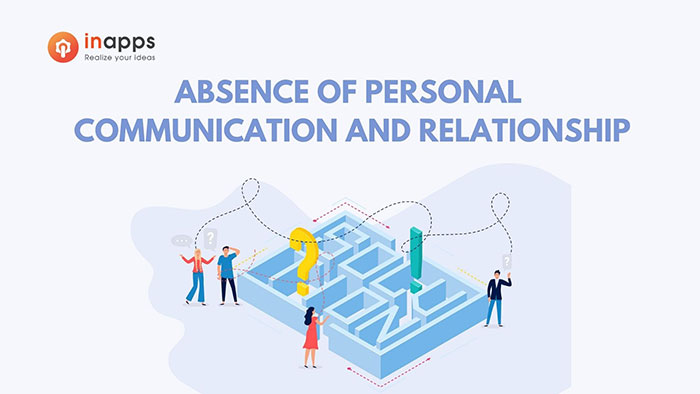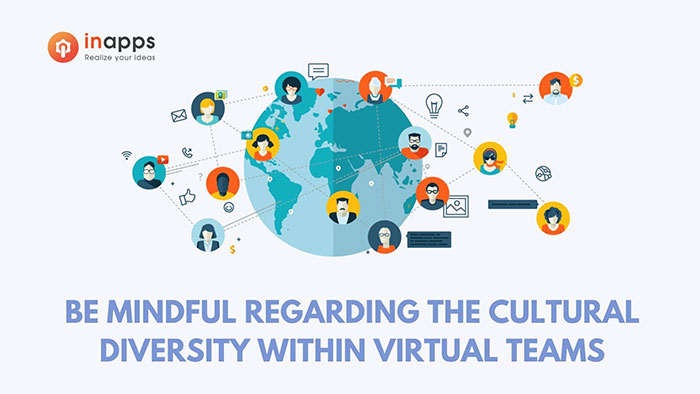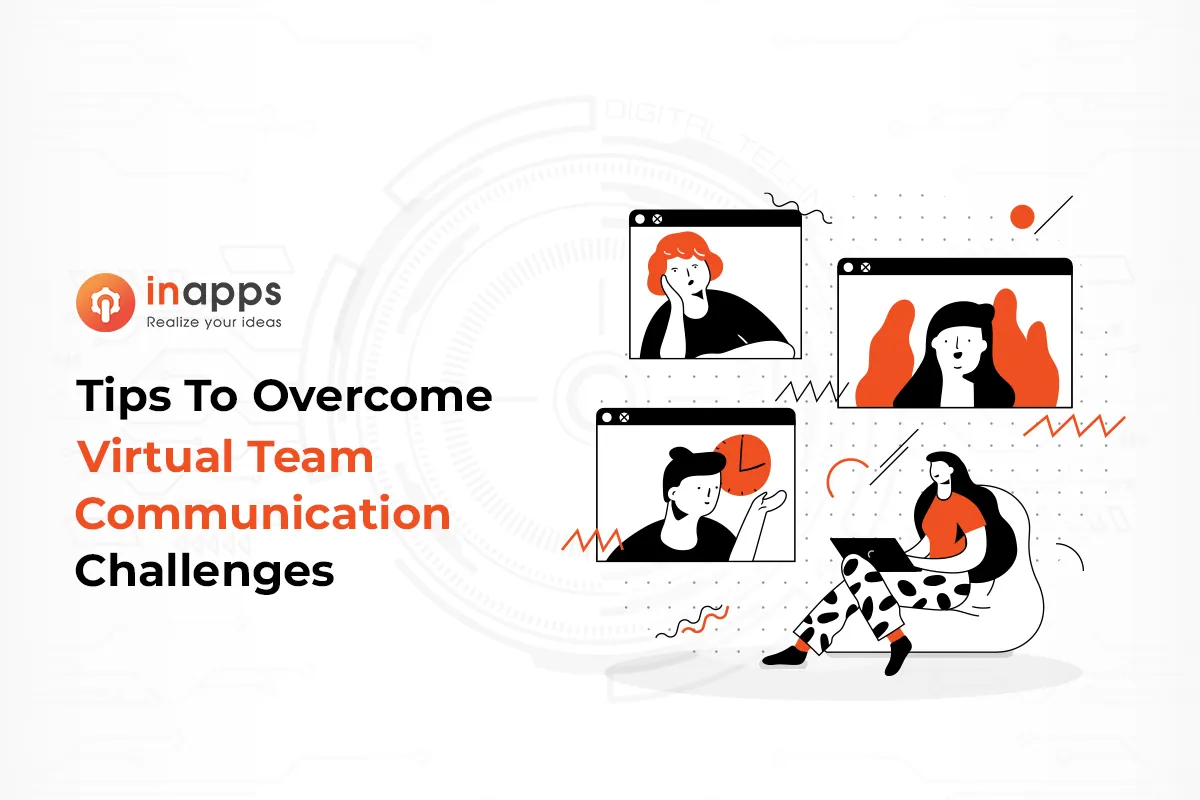- Home
- >
- Offshore News
- >
- 5 Challenges Of Managing Virtual Teams and Solutions
Since the rise of the internet, the way we work has changed a lot. Now, people can work for any company from anywhere in the world. This flexibility is great, but it also brings some problems. Sometimes, even though it’s easy to talk to each other online, the results aren’t always what we expect.
This article is here to help. We’ll look at the biggest challenges of managing virtual teams and show you how to deal with them effectively.
1. What is a Virtual Project Team in Virtual Team Project Management?
A virtual project team consists of members who work together from various locations to achieve their set goals. In today’s fast-paced internet world, technology allows us to join meetings from anywhere at any time/. This has led to the rise of geographically dispersed teams, often known as GDT (Geographically Dispersed Teams).
While these teams may never meet face-to-face, the right technology enables them to build relationships, collaborate effectively, and significantly contribute to their organization’s success. What once seemed impossible a century ago has now become standard practice and is rapidly becoming the norm. However, managing these teams presents unique challenges. So what are these specific challenges of managing virtual teams and what practical solutions to address them?

What is the definition of a virtual project team
2. Top challenges of managing virtual teams
Managing a virtual project team often brings a myriad of challenges. These difficulties often become more pronounced when you have less control and less direct oversight over the team. Let’s examine these challenges of managing virtual teams and discuss strategies to effectively address them.
2.1 Absence of Structural Congruence
In a traditional brick-and-mortar business, there is a clear physical setup with employees working together under one roof. This environment supports a well-defined organizational culture that everyone adheres to. Roles are clear, hierarchy is maintained, and the atmosphere is vibrant and structured.
However, virtual team project management presents a stark contrast. Employees are dispersed, often working from different locations without any physical connection. This setup significantly lacks the office culture that drives competency and progress. The absence of a structured environment can leave employees feeling disoriented and less connected. One of the key challenges of managing virtual teams is maintaining order and motivation without the traditional cues and controls, leading business owners to sometimes feel they have lost grip on the situation.
2.2 Absence of the Right Kinds of Tools
The Internet offers many communication tools to facilitate remote business operations. However, selecting the right tools is often problematic. Businesses frequently choose tools that are unnecessary, overly complex, or unsuitable.
Using the wrong tools can harm the business by wasting resources without providing real benefits. Managing a virtual team effectively involves choosing the right tools, like time-tracking software, screen recorders, and online presentation platforms. You should select and manage these tools efficiently to tackle virtual team communication challenges and enhance productivity.
2.3 Lack of Trust and Reliance
In virtual team project management, business owners often struggle with limited visibility into daily operations. Have you ever felt this way? This lack of direct supervision can lead to frustration, as owners might feel that they don’t have full control. This can breed a sense of distrust, making them insecure and prone to micromanaging. Such actions can irritate employees and distract them from their work.
This atmosphere of mistrust not only creates a negative environment but also makes employees uncomfortable working under such conditions. Additionally, there’s a risk of creating an imbalance within a hybrid organization. Unlike in-house teams that are closely supervised, virtual teams often receive inconsistent oversight. These dynamics contribute significantly to the virtual project team’s challenges, impacting both management effectiveness and team morale.
2.4 Remote Work Distractions
Employees working from home or remotely often feel in control due to less oversight. Yet, this flexibility can reduce productivity if they’re not skilled at remote work. Consider those working from couches. Is staying focused possible in such a setting? Distractions are common and challenging in remote work. It’s crucial to teach your team effective remote working practices and share top strategies for success.
2.5 Difficulty In Building Relationships in Remote Teams
Building strong relationships among employees is crucial for an organization’s success. It aids in employee retention and fosters a work culture that maximizes efficiency and productivity.
However, in a hybrid work environment, nurturing these relationships becomes more challenging. Remote workers often miss out on in-depth conversations and the warmth of personal interactions. Unlike in-house teams that benefit from established relationships, remote employees find it more difficult to collaborate effectively, share ideas, and thrive together.

One of the biggest challenges to virtual team project management is the lack of communication
3. The Biggest Challenge in Virtual Team Project Management
Having explored the various virtual team communication challenges a hybrid organization’s owner might face, let’s delve into their most daunting challenge: managing communication between in-house and remote teams.
Communication is a crucial business skill. A well-communicated platform ensures seamless employee interactions, clear business objectives, and smooth information flow within an organization. Without this, departments inevitably encounter problems.
Here are three key reasons why communication issues are often the biggest barriers to success:
- Communication Gaps Damage Internal Relationships: In hybrid organizations, communication gaps can hinder the development of strong relationships and lead to misunderstandings. It’s challenging to maintain effective communication between in-house and remote team members. As a result, some employees may be left uninformed about project statuses and decisions, damaging trust and collaboration.
- Communication Gaps Lead to Data Inconsistencies: Whether in a traditional or hybrid setting, organizations handle vast amounts of information daily. Virtual team members might face difficulties in transmitting data due to networking problems, software glitches, inadequate communication tools, or even simple data entry errors.
- Communication Gaps Obstruct Organizational Objectives: A breakdown in communication can prevent the correct conveyance of the organization’s vision, mission, and goals. In a virtual environment, the impact can be particularly severe. Employees struggle to align their efforts with organizational objectives defined by OKRs (Objectives and Key Results) if they don’t fully understand them.
4. How to Overcome Challenges of Managing Virtual Teams
We’ve outlined seven tips to help you overcome the challenges of managing virtual teams. This way, your virtual team will become a stronger, more connected team. Remember that good project management is critical in virtual teams, and it all starts with effective communication.
4.1 Hire Suitable Talent
Hiring the right people for your hybrid project team is the first step toward ensuring an effective communication system. Not everyone on the planet is cut out to work in a virtual team, and not everyone is built for remote work. Choose and hire developers with solid technological knowledge, experience, and expertise, as well as a remote-first mindset. Ensure that the people you’re hiring are a good fit for the hybrid workforce you’ve been assembling.

Hire the right person to shorten the communication gap
4.2 Organize an Ice-breaking Platform
After hiring the right people, the first thing you should do as a manager is to create a common platform for all employees to engage. For example, suppose you organize an ice-breaking session to introduce the new team to the in-house team that works for you or set up a messenger group for the new employees to break the ice among themselves. If your team uses Slack, you can easily connect employees for in-office meetings by using a simple Slack command.
4.3 Choosing the Right Collaboration Tools
Collaboration and communication tools are available in many forms, including instant messaging, data storage, task management, time tracking, video conferencing, and email services, among others. With so many options, it’s easy to experience decision fatigue.
It’s unlikely that you’ll purchase all the necessary tools at once. Take your time to evaluate each one through a cost-benefit analysis to determine which tools meet your team’s needs most effectively.
4.4 Acknowledging Cultural Diversity in Virtual Teams
Cultural diversity is a significant aspect of virtual team project management. In a hybrid company, it’s common to have team members from different parts of the state, country, or even globally. These employees bring diverse backgrounds, tastes, behaviors, cultures, and skills.
As a business owner, recognizing and understanding these cultural differences is crucial. A skilled manager always strives to promote collaboration and empathy among team members from various backgrounds, ensuring everyone works together harmoniously.

Respect the differences between employees from different countries
4.5 Say ‘No’ to Micromanagement
Micromanagement poses significant challenges in managing virtual teams. When project managers become overly attentive to how employees work, it can lead to distrust. This meticulous oversight can push employees out of their comfort zones and undermine previous achievements. It’s important to recognize this issue: avoid micromanagement to foster a trusting relationship with your team.
The negative impact of micromanagement extends to communication. Employees under close scrutiny may hesitate to bring up even critical issues, which can severely hamper productivity. Instead of micromanaging, investing in trusting relationships with employees is one of the best strategies for enhancing team dynamics and efficiency.
4.6 Facilitating Connection in a Hybrid Workplace
Ensuring easy communication is vital for uniting in-house and remote teams in a hybrid setting. While you might not always be physically present, your team must know they can reach out to you anytime they need assistance. Organize regular in-office events, both work-related and social, to foster team cohesion.
Encourage your managers to conduct daily standup meetings. These not only kick off the day with light conversation but also keep everyone aligned and informed. Additionally, schedule retrospective meetings to review the team’s performance over the past weeks or months. These gatherings bring everyone together and create a sense of inclusivity.

How to solve the biggest challenge to managing a virtual project team is to give trust
5. Tools that can help you achieve smooth communication & workflow
Virtual teams are made possible by technology. Don’t be afraid to use tools and software to manage your teams easier. The following is a list of tools that can help virtual teams communicate more effectively, as well as some popular options* to consider:
- Chat: Slack, Twist, Google Hangouts
- Project management: Trello, Jira, Asana
- Web and video conferencing: Google Meet, Zoom, Cisco Webex
- Collaboration and prototyping: Invision, Marvel, Adobe XD
- Scheduling: Calendly, Doodle
- Workflow automation: Zapier, Microsoft Flow, Monday
Not every tool will be a good match for your team. Consider trial periods or delegate the task of researching all options to determine which best meets your needs. Train your staff on the tools you choose to ensure that everyone uses them consistently and to their full potential.
6. What is the key to successful virtual team project management?
It’s about understanding how to communicate effectively! If you want to be a leader in a hybrid world, this is the first thing you must learn. Communication is one of the essential skills for any employee in any workplace.
People who communicate well are more likely to succeed and advance in their personal and professional lives. The same can be said about hybrid and virtual project teams. Your business has a better chance of thriving if your communication channels are well-functioning. And, if you’re still having trouble, try using the tips that InApps mentioned in this article to address the challenges of managing virtual teams.
Let’s create the next big thing together!
Coming together is a beginning. Keeping together is progress. Working together is success.




















